By Georgia Garrow
Joining a sorority, going to your first college party, meeting your dorm-mates. When a student enters college, they have expectations of how college life will be.
This view often includes positive experiences such as joining new clubs or becoming best friends with a roommate, but also includes negative encounters like hazing. An incoming freshman enters with hope to gain these positive experiences, and fear of facing the bad ones. College students have a legacy of embarrassing or harassing other students, leading to fear on campus and destruction of students’ mental health.
Hazing comes in many forms. It occurs in sports teams, clubs, fraternities and sororities, and many more organizations. Hazing includes forcing an individual to do activities such as consume alcohol, forcing them to do physical or strenuous tasks, physically abusing them, or completing illegal tasks. Hazing is a form of physical and psychological tormenting, and needs to be prevented in colleges and even high schools.
On my soccer team, freshmen entered into the school and were immediately subject to the horrors of hazing.
In high school, I have witnessed hazing firsthand. On my soccer team, freshmen entered into the school and were immediately subject to the horrors of hazing. When we began a practice, the freshmen were forced to fill waters, collect balls, and lug everything out to the field. Often times a freshman would carry a water jug for the entire team by herself, with no offers of help from any of the upperclassmen. At the end of practice, freshmen would have to collect all the scattered balls, and would often be blamed if something was left on the field. Players who had more talent were given automatic free passes from the hazing. Instead, players who contributed the same amount of effort, but didn’t have the natural talent, were targeted. Freshmen who weren’t as skilled as others would be burdened with more work. Although this hazing was not extreme, it still caused distress to the freshmen and could have been prevented.
When I came across this happening, I offered the freshmen help and tried to make them feel welcome. Rather than scaring the freshmen, my team should have created a welcoming environment for them to become comfortable with the team. The main ways to prevent hazing are through education and reliability. If each school is required to teach their students about hazing and its effects on students, hazing will be lessened greatly. When students see that hazing can lead to embarrassment or depression, they will think about the consequences that hazing will have on a person. If students are taught about real accounts of hazing by students who have been affected by it, they will have a better understanding of how those people feel.
Advocacy is the most effective way to cause a change, so educating students at college campuses about the harm hazing does will surely lessen the amount of hazing on campus. Another way to prevent hazing is by having reliable supervisors. Having a strict set of rules regarding hazing, and abiding by these rules is very important. If supervisors are attentive to the students around them, and pay attention to signs of hazing, it will be lessened. On my soccer team, my coach or captains could have taken more initiative to stop the hazing from occurring, and should have abided by a strict set of rules to ensure that the freshmen would be welcomed. If people are taught about the effects of hazing, and more strict guidelines are followed, the distress and embarrassment that accompanies hazing will be eradicated.
About the Author
Georgia Garrow was the second place winner of the National Federation of State High School Associations and HazingPrevention.Org High School Essay Contest for 2017/2018 and comes from the Marine Academy of Technology and Environmental Science in Point Pleasant Beach, NJ .


